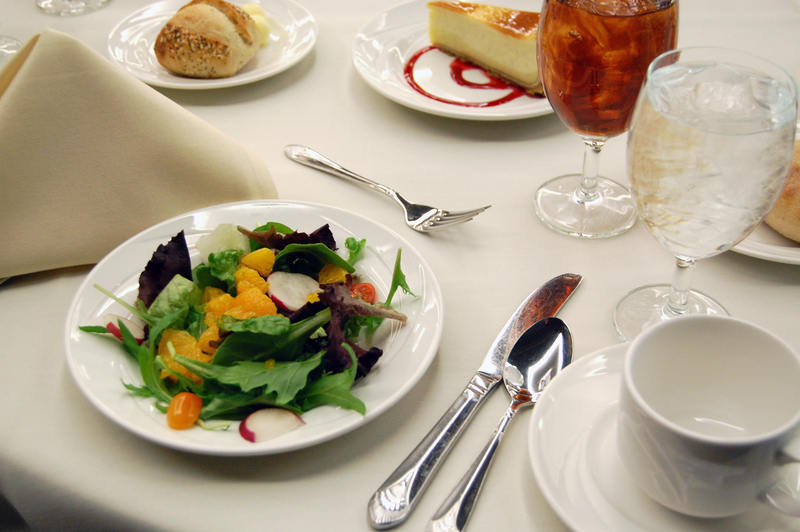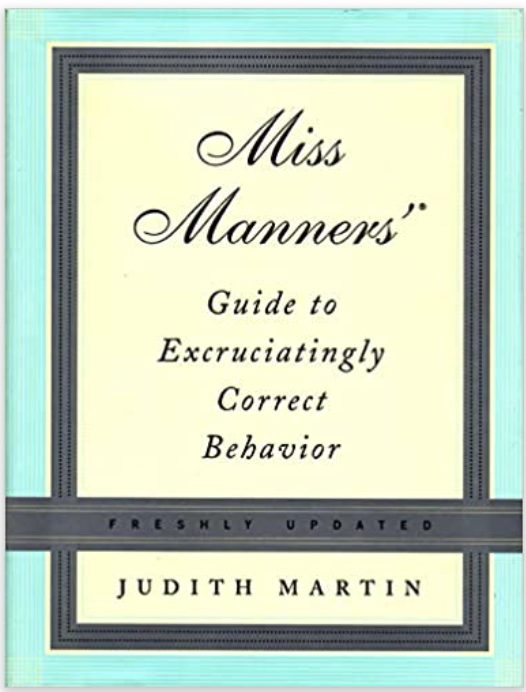How to Navigate a Formal Place Setting

Dinner with the boss. Or dinner with her parents. Either way, we're here to make sure you don't screw it up. Tweet

Highlights
Remember the good, old days when you could eat with your hands and still be called a good boy? Times have changed and you're older now.
These rules won't work with pizza or tacos, but for anything else you can place on a plate, there's a proper way of moving it from there to your mug.
Picture this:
You’re in the running for an exciting new job, or a big promotion with your current employer. The final hurdle is a business dinner with the boss. Or, you’re about to meet the parents of your new girlfriend over dinner.
In both situations, you need to make the best possible impression.
But there’s a problem: The restaurant they’ve chosen is the most expensive in the city. It’s famous for its old-school service and old-money patrons. You’ve never been inside a place this formal and exclusive, and you’re terrified.
You’ve seen Titanic 27 times, and you know what rich people do when they break bread with someone they consider unworthy:
Relax. I’ve got some good news for you. In all my years as a waiter at a five-star hotel in Los Angeles, I never saw real-life upper-class people behave like the Billy Zane character.
The point of good manners is to follow rules intended to make everyone comfortable.
Quite the opposite, in fact. If you’re uncomfortable, you make them uncomfortable, and what’s the point of being rich if you can’t enjoy yourself? In fact, the point of good manners is to follow rules intended to make everyone comfortable.
But I saw plenty of people like you. From the moment they sat down and saw the bewildering array of plates and silverware in front of them, their fear of embarrassment became so palpable I could feel it across the room.
So let’s get familiar with the place setting. Once you’re comfortable with that, you can easily fake your way through the rest of the evening.
- General etiquette
- Don’t sit until the host sits.
- When everyone is seated, your first move, before eating or drinking anything, is to open the napkin and spread it across your lap. If the napkin is on top of the plate and shaped for display, wait for the host to take theirs before you open yours.
- Cutlery
The most important rules:
- Nothing on the table is there to trip you up. Each knife, fork, or spoon has a purpose that corresponds to the food being served, as Julia Roberts learns in this classic scene from Pretty Woman:
- Use the cutlery from outside in. So the fork farthest to the left of the plate goes with the first course—these days, that’s typically a salad (which is why Julia Roberts is so confused). If you need to cut any part of a salad or appetizer, use the knife that’s farthest from the plate on the right.
- When in doubt, cut the food. The myth that says you should never cut a salad is just that—a myth. I’ve been served salads with a piece of lettuce the size of a catcher’s mitt. So what do you do? You cut it into a bite-sized piece. You never want to open your mouth unnaturally wide or have food brush your lips on the way in. You can’t make a good impression with salad dressing dribbling down your chin, even if it’s Alimentari’s best balsamic.
- If soup is part of a fixed-dinner menu, the appropriate spoon will already be on the table. If you order soup from the menu, the waiter will bring the spoon you need.
- If you see a fork and spoon above your plate, those are for dessert and/or coffee. If they aren’t already on the table, the waiter will bring what you need at the appropriate time.
- The waiter may also bring you something that isn’t on the table when you first sit down. For example, if you order a steak, they’ll bring a serrated knife and take away the other one.
- Glassware
- If it’s on the table, it has a purpose. The waiter will put water in the water glass (if it isn’t already poured, as it would be for a wedding or banquet), and wine in the wine glass.
- In a restaurant, the waiter will bring the appropriate glass for the type of wine you or the host orders—usually a smaller, narrower glass for white; a wider, rounder glass for red, or a tall, narrow flute for champagne.
- Finer points
- A true salad fork will be smaller than a dinner fork. The tine on the left edge of the fork will be bigger than the others. Use that edge if you need to cut part of the salad. Most of the time, however, the salad fork will have normal tines, in which case you’ll use one of your knives for cutting.
- Some dishes require special cutlery. If you order shellfish, for example, you’ll get an oyster or cocktail fork, which has two or three tines. It will be the only fork on the right side of your plate.
- If there’s a small plate above your forks, that’s for bread. You’ll often have a butter knife on the plate. If you don’t, and you want to put butter on your bread, use the knife farthest from your plate. Put the butter on the plate, not directly on the bread.
Final tip:
If the first dinner with your future in-laws is at your place, and you need to set the table appropriately, here’s a quick tutorial:
But, as with many things, it’s easier of you just shout “Opa!” and toss your salad–and everything else.







